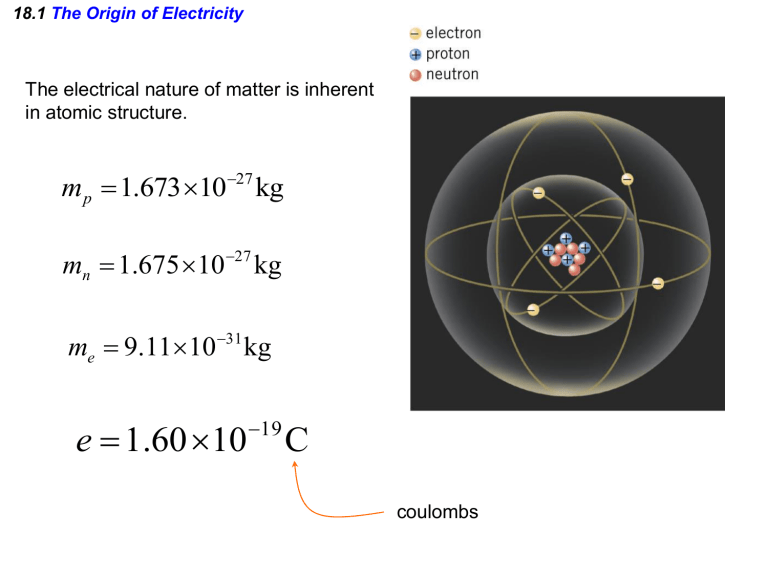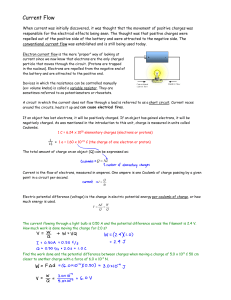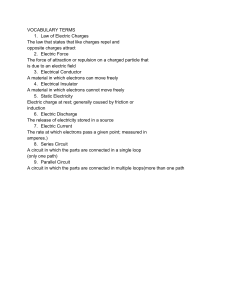
18.1 The Origin of Electricity The electrical nature of matter is inherent in atomic structure. mp 1.673 1027 kg mn 1.675 10 27 kg me 9.1110 31 kg e 1.60 10 19 C coulombs 18.1 The Origin of Electricity In nature, atoms are normally found with equal numbers of protons and electrons, so they are electrically neutral. By adding or removing electrons from matter it will acquire a net electric charge with magnitude equal to e times the number of electrons added or removed, N. q Ne 18.1 The Origin of Electricity Example 1 A Lot of Electrons How many electrons are there in one coulomb of negative charge? q Ne q 1.00 C 18 N 6.25 10 -19 e 1.60 10 C 18.2 Charged Objects and the Electric Force It is possible to transfer electric charge from one object to another. The body that loses electrons has an excess of positive charge, while the body that gains electrons has an excess of negative charge. 18.2 Charged Objects and the Electric Force LAW OF CONSERVATION OF ELECTRIC CHARGE During any process, the net electric charge of an isolated system remains constant (is conserved). 18.2 Charged Objects and the Electric Force Like charges repel and unlike charges attract each other. 18.5 Coulomb’s Law 18.5 Coulomb’s Law COULOMB’S LAW The force of attraction or repulsion acting along a straight line between two electric charges is directly proportional to the product of the charges and inversely proportional to the square of the distance between them. F k q1 q2 8.85 10 12 C 2 N m 2 r2 k 1 4o 8.99 109 N m 2 C 2




